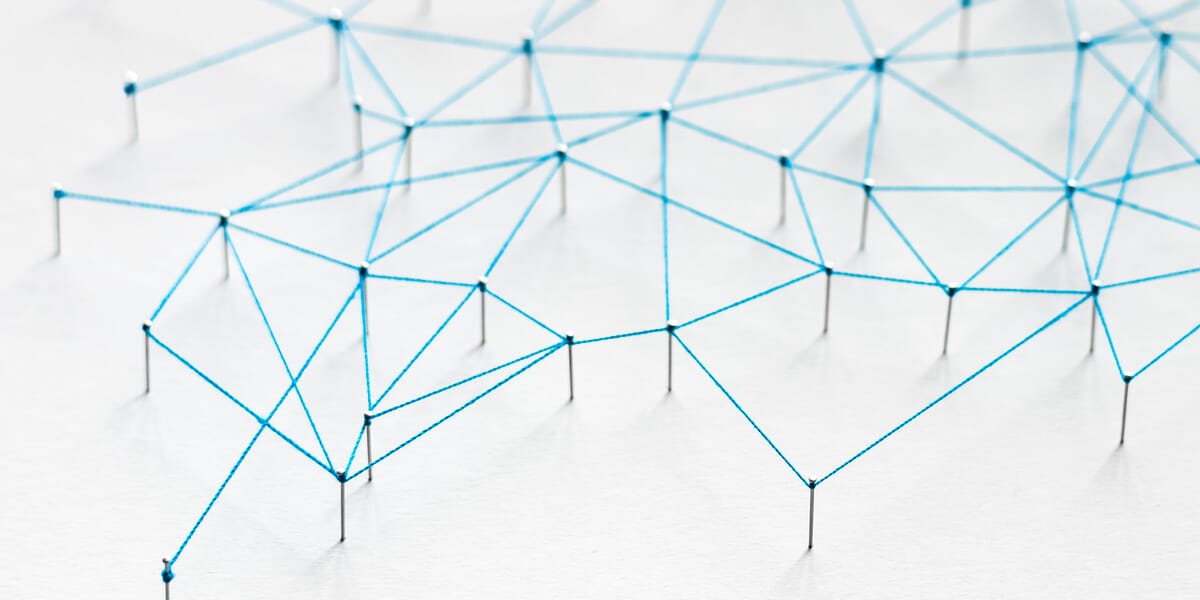
What is Chat GPT and how is it used?
30 January 2023
Machine learning algorithms you should know in 2023
28 February 2023
Before your content can be classified, it needs links. Google finds your posts and pages best when they are linked to other pages on the web. Internal links also connect your content and give Google an idea of the structure of your site. They can generate a hierarchy on your page, such as enables you to give more value to the links for your most important pages and posts than to other, less worthwhile pages. Using the right internal linking strategy could, therefore, improve your position in search results.
What is internal linking?
Internal links are links from one page to another within one domain. Any site with more than one page should be linked via internal linking.
Think of your homepage. Typically, the top menu holds links to other internal pages: perhaps an About Us, Shop, and Contact page. This kind of internal linking structure is essential in SEO since it constructs the architecture of the page and eventually will improve your link balance.
The more websites within one domain, the more content search engine robots can crawl, increasing your chance of ranking.
Internal links vs. external links
External links are links in which the source domain differs from the target. These are the links that will take the user away from your site. They, too, have their place within SEO. They show Google you care about quality and that you create fair and balanced content.
Types of internal links
Internal links are a prerequite for user-friendly site since it would help users navigate around with much ease, thereby keeping them interested. Internal links come in many forms including text links, navigation menus and image links.
Navigation links
Navigate links are those that move the user around the website. They basically allow opening up other pages of the website and returning home. The links in navigation may also include another related page—for instance, a social networking page or another link to another website.
We can distinguish different kinds of navigation links:
- Menu links znajdują się zwykle na górze strony internetowej i oferują użytkownikowi sposób poruszania się po witrynie. Zazwyczaj są one podzielone na kategorie i podkategorie, aby ułatwić korzystanie z nich, a także są podświetlone lub mają wizualną wskazówkę, która przyciąga uwagę użytkownika.
- Footer links usually appear at the bottom of a web page and provide supplemental information on the site to the user. They would link related pages or other useful resources in addition to information relating to the terms of use, privacy policy, and contact information of the website.
- Basically, sidebar links are normally located in the sidebar of a website and allow a user to quickly navigate to certain pages or sections of a website. Mostly, they are categorized under categories or menus from where one can quickly navigate to a certain page of choice.
One, breadcrumbs are a type of navigational links that allow the user to trace his steps on the site. They provide an apparent visual clue about where a user is in a site and how they have arrived at the present page. In this respect, it enables one to return quickly to the previous page, if necessary.
Contextual links
Contextual links, as the name suggests, refers to links in the website content that are relevant to it and offer supplementary information to the readers, helping them further in the topic.
These contextual links not only are good in terms of SEO but also help in better ranking in the search results. At the same time, they improve the user experience with the additional information and help the readers seek what they want. Contextual links are also sometimes used to promote products and services because they can be placed at specific positions to catch attention. Contextual links increase the visibility and traffic directed towards a business or website.
Image links
Image links are not as important when compared to text links in terms of SEO. While SEO image recognition is getting better, Google’s crawlers just can’t understand what the image is about. Hence, when using them, it is best that the image has alt text and a caption that enables Google’s crawlers to understand what the image is about.
Are internal links good for SEO?
Internal links are links connecting one page of your website to another page on your website. They help search engines understand the structure of a site and even the relationships between various pages, distributing link capital throughout the site.
It can also contribute towards an enhanced user experience whereby visitors can easily go through your site and find relevant content. Internal link is very important from the point of view of SEO and brings many benefits. Below are some of them:
- Internal link reduces the bounce rate.
- Since internal links convey link value, by including an internal link on your blog, you can improve your page ranking.
- An internal link is very important in increasing the number of page views.
- Many a time we have a problem regarding indexing on Google, but by using internal links you can quickly index your page.
- The internal link really leads to SEO improvement of the site.
- The internal link is also very important in increasing organic traffic.
Optimal structure of internal links
This used to be traditionally done using an internal structure of links in the form of a cascade or a pyramid. It means creating a hierarchy of links between the various pages. At the top of that pyramid comes the home page, next to it are category pages, then category pages, then sub-category pages, then product pages and blog posts, and the last are other pages. These links between pages should be two-way in such a way that there is a link from the home page to the other pages and vice versa.
This will also make it easier for search engines to crawl and index your site since all of the pages are linked and are easy to find. This helps users navigate the site with much ease as they can get to the landing page from the home page.
Consider the minimum number of links from a home page to any other page on the site. More links mean more crawl depth, more user clicks to reach the page—and harder to create conversions. Now, this pyramidal structure cannot always be kept in mind as no website completely follows such a structure.
Of course, all of this will define how well the SEO strategy works. I said above, and I will repeat it: take it seriously right from the start, make sure it is put to work with all its possibilities. It is far easier to start building internal links from day one than going back and focusing on it later.


